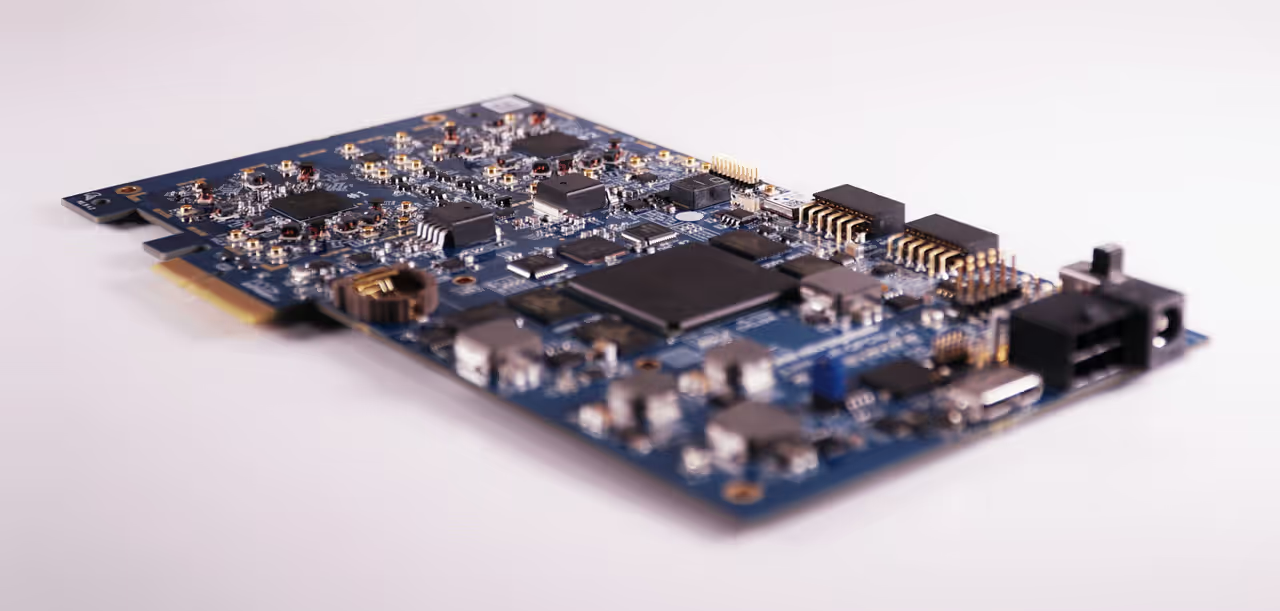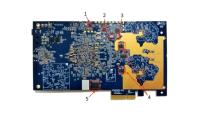
The LimeSDR QPCIe – what you need to know
The LimeNET campaign brings together three incredibly powerful, flexible systems that we believe will democratise wireless innovation. In our fourth in a short series of blog posts following the launch of the LimeNET campaign we look at the new 4x4 MIMO version of the LimeSDR - the LimeSDR QPCIe. This is the exceptionally powerful software defined radio board used in the LimeNET carrier-class equipment and can be used in conjunction with the LimeNET CORE and amplifier (see later posts) or as a standalone* radio controlled separately.
Further information is also available on the Crowd Supply page, which you can visit here to back and share.
What's changed?
This new LimeSDR board is a much more sophisticated version of the original LimeSDR PCIe board. In particular, it has two LMS7002 transceiver chips instead of one, which allows for a 4x4 MIMO configuration instead of a 2x2 MIMO configuration.
Core components
The board's key components are all on the front side. If we take a look at this we can see the two advanced field programmable transceivers (#26) which together move from the original LimeSDR's 2x2 MIMO and deliver true 4x4 MIMO on the device. In addition to this, the board.
Connectivity is managed via the PCIe standard (#6), however there is also the USB micro type B standard (#13)

LimeNET QPCIe board (front side)
1. RF RX connectors15. IC43 - EEPROM2. J43, J42 - reference clock in and out16. IC43 - FX3 flash boot jumper3. LVDS interface17. J28 - FPGA JTAG (0.1”)4. IC40, J41 - GNSS receiver and antenna connector18. SW2 - 4-bit switch5. IC38 - FLASH memory19. IC21, IC23 - FPGA configuration flash memory6. J39, J38 - 2 x PMOD connectors20. BATT1-RTC backup battery7. LEDs21. IC39 - temperature sensor8. SW3 - power control switch22. IC39 - temperature sensor9. J44 - external 12 V power supply connector23. RF RX connectors10. J45 - 6-pin PCIe power connector24. RF TX connectors11. J31 - FX3 JTAG (0.05”)25. RF PAs, switches, and connectors12. IC34 - USB 3.0 controller (FX3)26. IC1, IC4 - 2 x FPRF LMS7002M transceivers13. J29 - USB 3.0 connector (micro Type-B)27. RF TX connectors14. IC35 - FX3 flash memory

LimeNET QPCIe board (back side)
1. IC49 - clock synthesizer2. IC46 - phase detector3. XO1-3 VCTXO4. IC2, IC3, IC5, IC6-RF transceivers EEPROMs5. IC42, real time clock
How much will it cost and when will it be delivered?
The board is available to backers at $2,599.
The first LimeSDR QPCIe boards will ship from October 2017.
App stores and getting up and running
LimeNET is built on a robust, community-driven software stack, including GNU Octave, Ubuntu, Pothosware, Lime Suite, GNU Radio, Lua Radio, pyLMS7002M. We'll be announcing more information on our app stores shortly, but they have had a face lift and, though our partnership with Ubuntu, become easier to access and get started with.
* While you can use the LimeSDR QPCIe board with other computers, LimeNET Core and, by extension, LimeNET Base Station are the only complete systems we’ve tested and pre-qualified as part of the LimeNET ecosystem. Of course, we encourage developers to integrate LimeSDRs of all flavors into new hardware configurations, but our ability to support and maintain hardware configurations is currently limited to those in the LimeNET family.